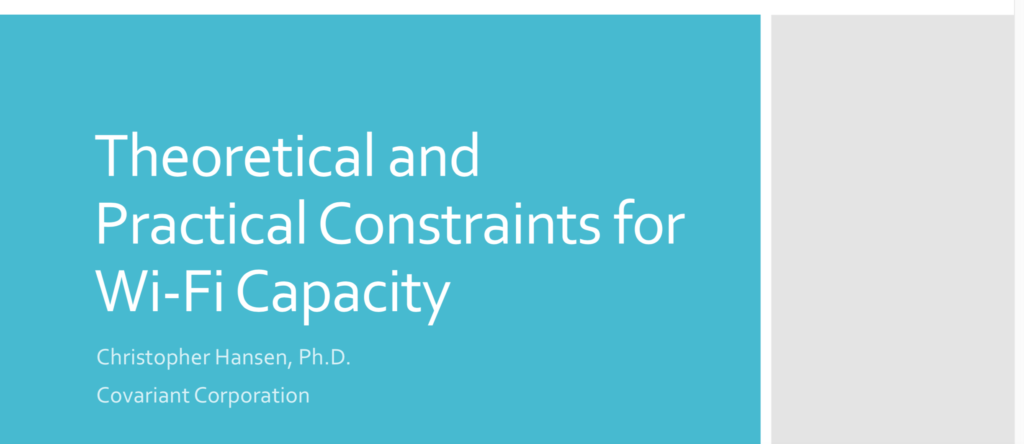PATCA is a community of experts and at our June meeting, Christopher Hansen, PhD a long-time PATCA member and founder of Covariant Corporation, gave a detailed briefing on the current state and likely evolution of the Wifi family of wireless communication protocols. Wi‐Fi is a brand name for devices that have passed a certification test from the Wi‐Fi Alliance. Wi‐Fi devices implement the IEEE (Institute of Electrical and Electronics Engineers) 802.11 protocol: the letters “a/b/g/n/ac/ad/ah” are amendments. Wi‐Fi devices transmit and receive IP (internet protocol) packets and control traffic. The 802.11 protocol was initially released in 1997 and saw wider use with the 802.11a and 802.11b modifications: the standard has seen a steady evolution with new backward-compatible amendments released every few years adding new frequencies and modulation types.
Hansen drew a contrast to evolution of cell phone protocols that use licensed spectrum and assume the base station is two or three orders of magnitude more sophisticated than any handset or end station electronics. Wifi uses unlicensed spectrum and assumes a more symmetric configuration with access points (wireless routers) and stations (clients) have roughly equal capabilities.
- 2400‐2483.5 MHz ISM band: shared with Bluetooth, microwave ovens, etc.
- 5150‐5350, 5490‐5875 MHzUNII and ISM bands: some sub‐bands shared with radar systems
- 57‐65GHz mmwave band (802.11ad)
- sub 1GHz 802.11ah
Wi-Fi access speeds increase with each new generation, but there are fundamental limits to how fast these networks can operate.
- Fairness to legacy devices forces overhead timings to remain fixed and limit throughput, the only way around this problem has been to add new spectrum as the 802.11ad does in the 60 Ghz (vs. 2.4Ghz and 5Ghz for older devices).
- In addition there are complications introduced by overlapping device transmissions in the same area (a problem cellular addresses by having the base station control access in a particular cell).
- The Near‐Far problem affects all wireless systems. Longer distances reduce signal power at the receiver, which reduces the data rate. Low data rates are often used for management (broadcast) traffic because the AP (wireless router) does not know how far away the client devices will be. This low data rate management traffic wastes bandwidth when stations are near.
Speaker Bio: Christopher Hansen has over 20 years of experience in wireless communications and a Ph.D. in electrical engineering from UCLA. Through his consulting company, Covariant Corporation, he has been helping clients with challenging problems in communication theory, signal processing, RF systems and Wi-Fi standardization for nearly five years.

